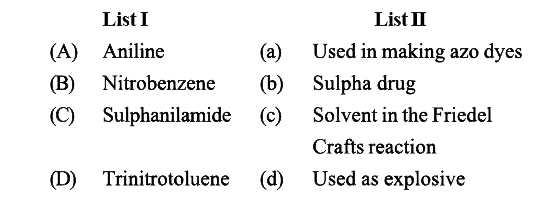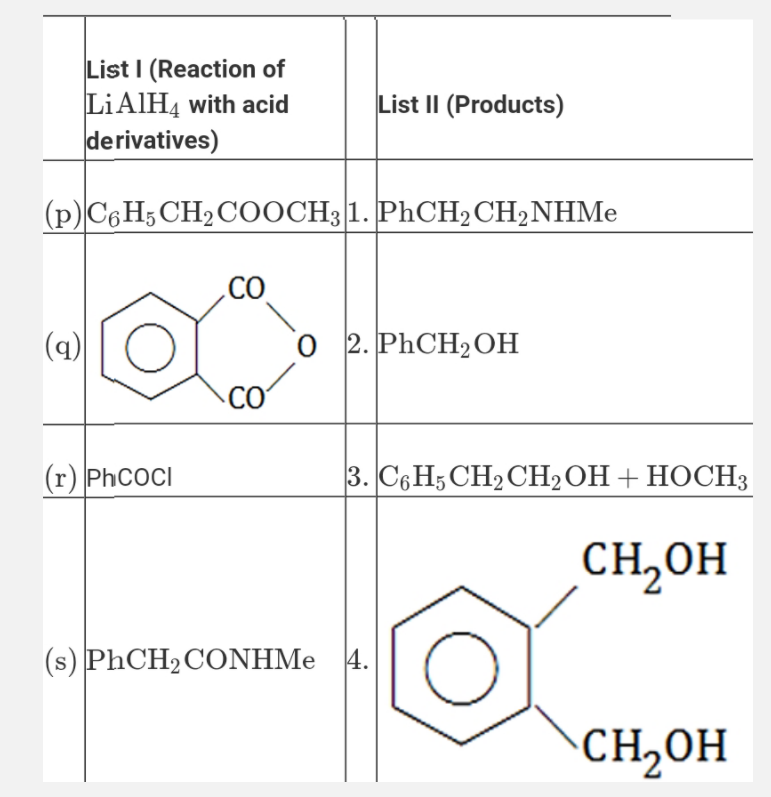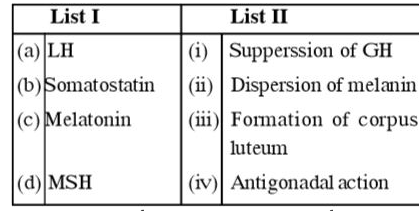Among the terms listed below, those that are not technically correct names for a floral whorl are
(i) Andrecium (ii) Carpel
(iii) Corolla (iv) Sepal,
i and iv
iii and iv
ii and iv
i and ii
The correct Answer is:c
To solve the question regarding which terms are not technically correct names for a floral whorl, let's analyze each term step by step.
Step 1: Understand the Floral Structure
A complete flower consists of four main floral whorls arranged from the outermost to the innermost:
1. Calyx - made up of sepals
2. Corolla - made up of petals
3. Androecium - made up of stamens (the male reproductive part)
4. Gynoecium - made up of carpels (the female reproductive part)
Step 2: Analyze Each Term
- (i) Androecium: This is the correct term for the male whorl of the flower, which consists of stamens. Therefore, it is a technically correct name for a floral whorl.
- (ii) Carpel: This refers to a single unit of the gynoecium (the female part of the flower). While it is part of the floral structure, it is not a term that represents a complete floral whorl. Hence, it is not a technically correct name for a floral whorl.
- (iii) Corolla: This is the correct term for the whorl of petals in a flower. Thus, it is a technically correct name for a floral whorl.
- (iv) Sepal: This refers to an individual part of the calyx, which is the outermost whorl of the flower. Like the carpel, it is not a term that represents a complete floral whorl. Therefore, it is also not a technically correct name for a floral whorl.
Step 3: Identify Incorrect Terms
From the analysis:
- The terms that are not technically correct names for a floral whorl are Carpel (ii) and Sepal (iv).
Conclusion
The answer to the question is that the terms that are not technically correct names for a floral whorl are:
- Carpel (ii)
- Sepal (iv)
Thus, the correct answer is option C (Carpel and Sepal).
---
A complete flower consists of four main floral whorls arranged from the outermost to the innermost:
1. Calyx - made up of sepals
2. Corolla - made up of petals
3. Androecium - made up of stamens (the male reproductive part)
4. Gynoecium - made up of carpels (the female reproductive part)
- (i) Androecium: This is the correct term for the male whorl of the flower, which consists of stamens. Therefore, it is a technically correct name for a floral whorl.
- (ii) Carpel: This refers to a single unit of the gynoecium (the female part of the flower). While it is part of the floral structure, it is not a term that represents a complete floral whorl. Hence, it is not a technically correct name for a floral whorl.
From the analysis:
- The terms that are not technically correct names for a floral whorl are Carpel (ii) and Sepal (iv).
The answer to the question is that the terms that are not technically correct names for a floral whorl are:
- Carpel (ii)
- Sepal (iv)
Topper's Solved these Questions
- NCERT Exemplar Questions +2 (REPRODUCTION IN ORGANIMS)Book:TRUEMEN BIOLOGY ENGLISHChapter:NCERT Exemplar Questions +2 (REPRODUCTION IN ORGANIMS)Exercise:MCQs
Explore 17 Videos
- NCERT Exemplar Questions +2 (STRATEGIES FOR ENHANCEMENT IN FOOD PRODUCTION)Book:TRUEMEN BIOLOGY ENGLISHChapter:NCERT Exemplar Questions +2 (STRATEGIES FOR ENHANCEMENT IN FOOD PRODUCTION)Exercise:MCQs
Explore 25 Videos
Similar Questions
Knowledge Check
Given below is a list of few sexually tranmitted infections. Identify the deseases caused by bacteria among these
(i) Gonorrhoea
(ii) Giardiasis
(iii) Trichomoniasis
(iv) Chancroid
(v) SyphilisA(i) and (ii)B(i),(iv) and (v)C(iii) and (v)D(ii), (iii) and (iv)
Match list I with list II and choose the correct answer from the codes given below :

View SolutionThe correct order of increase in the size of the structures listed below is
(i) Proteins
(ii) Plant cell
(iii) Mitochondria
(iv) Ribosomes
View SolutionGiven below are sets of five terms each. Rewrite the terms in correct order in a logical sequence beginning with the term that is no term is underline.
Sepal, Petal, Carpel, Anther, Stalk of flower––––––––––––––––
View SolutionThe statements given below descibe certain features that are observed in the pistil of flowers.
(i) Pistil may have many carpels.
(ii) Each carpel may have more than one ovule.
(iii) Each carpel has only one ovule.
(iv) Pistil have only one carpel.
View SolutionThe statements given below describe certain features that are observed in the pistil of flowers.
(i) Pistil may have many carpels.
(ii) Each carpel may have more than one ovule.
(iii) Each carpel has only one ovule.
(iv) Pistil have only one carpel.
View SolutionMatch the List I with List II and select the correct answer using the codes given below the lists ?

View SolutionMatch list I with list II and select the correct answer using the codes given below the list

View Solution